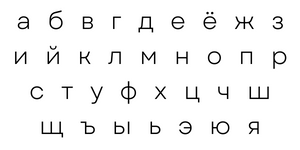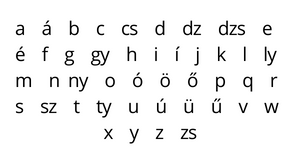Is Hungarian similar to Russian?
Hungarian belongs to the family of Uralic languages, which means that Hungarian has similarities to other languages from that family, such as Finnish and Estonian.
Russian belongs to the family of Slavic languages which means that Russian is similar to other Slavic languages such as Polish, Ukrainian, Czech, etc.
Although Hungarian and Russian belong to completely different language families, there is a small fraction of similar vocabulary words which are shared between these two languages.
Hungarian is not a Slavic language but it has absorbed some Slavic vocabulary words. Slavic languages are spoken in many of the neighboring countries to Hungary (For instance Slovakia, Ukraine, Serbia, Croatia).
It is estimated that 20% of Hungarian vocabulary words have been borrowed from neighboring Slavic countries. Some of these borrowed Slavic words are similar to existing Russian words.
Here are some examples of Hungarian vocabulary words which are similar to Russian words:
- “Wednesday” is “szerda” in Hungarian and “среда” (pronounced “sreda” ) in Russian
- “expensive” is “drága” in Hungarian and “дорого” (pronounced “dorogo” ) in Russian
- “lunch” is “ebéd” in Hungarian and “обед” (pronounced “obed” ) in Russian
- “freedom” is “szabadság” in Hungarian and “свобода” (pronounced “svoboda” ) in Russian
Hungarian vs Russian alphabet
Hungarian and Russian are languages that use different writing systems. The Russian alphabet is based on the Cyrillic script, whereas the Hungarian alphabet is based on the Latin script.
The Russian alphabet The Hungarian alphabet
The Hungarian alphabet

The Hungarian alphabet contains the 26 letters which we have in the English alphabet, plus 18 additional letters.
Several Hungarian letters are what linguists call digraphs: these are letters made up of two characters. Hungarian also has a trigraph (dzs) which is a letter composed of 3 characters.
The Hungarian letters with a double acute accent (ő, ű) are fairly specific to the Hungarian language. In fact, in typography, the double acute accent is sometimes called the “hungarumlaut”.
Hungarian is a genderless language, Russian has grammatical gender
Grammatical gender is an area where the Hungarian and Russian languages differ greatly.
Russian has gendered pronouns, whereas gendered pronouns don’t exist in Hungarian.
For example, the English pronouns “he” and “she” both translate to the same genderless pronoun “ő” in Hungarian.
Russian nouns have genders, whereas Hungarian nouns don’t have a gender.
For example, the word for “book” in Russian is “кни́га” and is feminine. The word “language” which is “язы́к” is masculine.
Russian grammar doesn't just have two genders (like in Spanish and French) but it has three genders (like in German).
These 3 grammatical genders in Russian are masculine, feminine, and neuter. An example of a Russian noun with the neuter gender is “де́рево” which means “tree” or “wood”.
Hungarian is a genderless language, whereas gender is very present in Russian grammar. In this area, Hungarian and Russian are absolutely not similar.
Definite and indefinite articles exist in Hungarian but don't exist in Russian
English has definite and indefinite articles (the / a, an) and so does Hungarian. In Hungarian, the definite article is ‘a’ and it becomes ‘az’ before a vowel. The indefinite article in Hungarian is ‘egy’.
In the Russian language, definite and indefinite articles don't exist. The absence of articles can seem unusual to English speakers, but it is a common characteristic of most Slavic languages. Interestingly Latin is another language that doesn't have articles.
The fact that Hungarian has articles is noteworthy because they don’t exist in the other two main Uralic languages spoken in Europe (Finnish and Estonian).
Grammatical cases Russian vs Hungarian
Russian and Hungarian are both languages which have many grammatical cases. Russian has 6 grammatical cases and Hungarian has 18.
This is one of the reasons why Russian and Hungarian are both among the hardest languages for English speakers to learn.
Conclusion
Hungarian and Russian are far from being similar languages. They belong to completely different language families: Russian is a Slavic language, whereas Hungarian is a Uralic language.
Uralic languages such as Hungarian, are not part of the Indo-European language family of languages. Slavic languages such as Russian, and Germanic languages such as English are part of the Indo-European family of languages.
In terms of language families, Hungarian is more unrelated to Russian than English is to Russian.
Despite these completely different origins, some Slavic vocabulary words have entered the Hungarian language from neighboring Slavic countries.
As a result, there are some Hungarian vocabulary words which are similar to Russian vocabulary words. But this is a small fraction of the total Hungarian vocabulary.
Hungarian and Russian are nowhere close to being mutually intelligible languages.